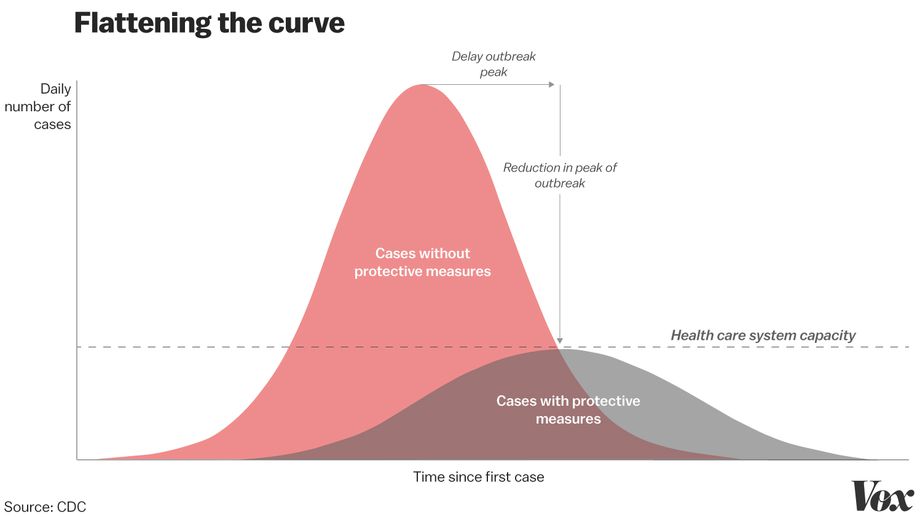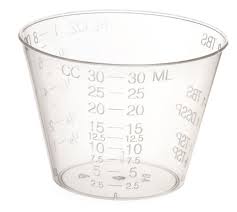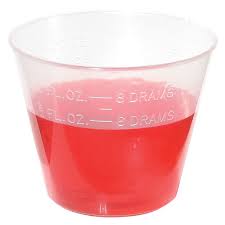
Objective: Students will understand the dynamics of the transmission of diseases by taking part in a "hands-on" simulation.
Introduction: Begin with a discussion of how epidemics begin, and how they spread. Give some examples from history, such as the Plague, AIDS, Ebola, H1N1, or make reference to movies such as Outbreak. Tell students, or have them listen to, the fascinating story of Typhoid Mary, and describe the role of the CDC (Center for Disease Control). Discuss the concepts of a biohazard, quarantine, epidemic and pandemic. Explain how today's simulation will work. Ask why local epidemics can more easily become pandemics in the modern world (speed of travel, open borders, large population). Talk about cross-species transmission. Consider that even if the same number of people get sick, preventative measures may flatten the curve, reducing strain on emergency services.

Simulations
https://www.washingtonpost.com/graphics/2020/world/corona-simulator/
http://fred.publichealth.pitt.edu/proj/measles/
http://www.shodor.org/interactivate/activities/SpreadofDisease/
http://www.gleamviz.org/simulator/
Lab Materials
Option A (More Dramatic): Prepare a collection of clear plastic cups. You should have one for each student. In one of the cups, put a sodium hydroxide (NaOH) tablet dissolved in water to create a clear colorless liquid with a high pH. In each of the other cups, fill to the same level with tap water. Put a secret mark on the cup with the sodium hydroxide, or note carefully which student takes the unique cup. You will need a dropper bottle with phenolphthalein pH indicator solution later in the lab. Phenolphthalein is an organic compound (C20H14O4) used as an acid-base indicator. (Interestingly, it is also the active ingredient in laxatives!) The compound is colorless in acidic solution and pinkish in basic solution (with the transition occuring around pH 9). These preparations must be made before students enter the room.
Warning: Students should be careful not to spill the contents of the cups and to irrigate the affected area immediately with water if they come into contact with the liquid, as it can cause mild irritation to the skin and eyes. Only add a small amount of NaOH to water. Never add water to a large supply of NaOH. The reaction is exothermic (it gives off heat) and could boil a small amount of water rapidly. Although it might seem obvious, DO NOT DRINK any of these fluids!



Option B (Cheap and Easy): If the chemicals are a concern, or are difficult to obtain, you can modify this lab with the use of opaque cups and food coloring, but you'll have to make a few adjustments. The infected person has a cup with water and a lot of dark blue or dark red food coloring, and everyone else has a cup with just plain water. The cups should be opaque rather than clear (so people can't easily see who's infected), and all fluid exchanges should be conducted secretly so that nobody knows whether they are about to encounter an infected person or a healthy one (keep your cup covered with your hand so they can't see if you're infected!). Then proceed as before, with several rounds of fluid exchange, and gather your data at the end on who is infected. Do the fluid exchanges in total silence so as not to give the answer away. Have the uninfected people try to figure out who was the source (because the infected people will know when it happened).
Procedure: Write down the names of all the students in the class who are present. Have students copy this list of names onto the handout of names. The cups with liquid represent bodily fluids, and students will mix their bodily fluids to simulate the spread of a disease. Exchanges will occur in two separate rounds, which we will call "Day 1" and "Day 2". Students will each select a person with whom to exchange fluids. When everyone is done, Day 1 is over and Day 2 begins with a second round of fluid exchange. Therefore, each student will be a "giver" exactly twice, but the number of times each student is a "receiver" will vary. When completed, ask each student (the giver) who their two receivers were, so all students can get the data copied onto their sheets.
Diagnosis & Analysis: Add a drop of indicator solution to each student's cup. If the solution remains clear, they are healthy. If the solution turns pink, they are infected. (Alternately, with Option B, any cup with reddish colored liquid is infected, whereas clear liquid is healthy.) Cross out all of the names of students who came into contact with the disease, and ask them to try to figure out who was the source. Tell them that only one person was initially "infected", and that the best clues will come from looking at people who exchanged fluids with a sick person, but who are not sick themselves. This will indicate that the sick person contracted the disease after that contact, and also shows that this person was not the source of the infection. Insist that students explain the path of infection rather than just guess who was the source. Finally, reveal the source and have students see if they can then trace the path of infection.
Timeline: 1 hour
15 min. Introduction of the disease simulation and copying of names.
05 min. Fluid exchange Round 1- spreading of the simulated disease.
05 min. Fluid exchange Round 2- spreading of the simulated disease.
05 min. Recording and copying of fluid exchange data to and from the board.
10 min. Determination of the infected individuals while students begin work on lab questions.
05 min. Listen to student theories, and ask for evidence.
05 min. Announcement of the infectious individual, and explanation of the results.
10 min. Continued work on the lab questions, and time for more discussion.
List all of the students in the first column. After two rounds of "bodily fluid exchange" record both contacts and share the data. After the data is recorded, the teacher will add an indicator which tells who lived and who died. You must then try to recontruct the path of this epidemic back to its single source.
|
|
|
|
|
|
|
|
|
|
|
|
|
|
|
|
|
|
|
|
|
|
|
|
|
|
|
|
|
|
|
|
|
|
|
|
|
|
|
|
|
|
|
|
|
|
|
|
|
|
|
|
|
|
|
|
|
|
|
|
|
|
|
|
|
|
|
|
|
|
|
|
|
|
|
|
|
|
|
|
|
|
|
|
|
|
|
|
|
|
|
|
|
|
|
|
|
|
|
|
|
|
|
|
|
|
|
|
|
|
|
|
|
|
|
|
|
|
|
|
|
|
|
|
|
|
|
|
|
|
|
|
|
|
|
|
|
|
|
|
|
|
|
|
|
|
|
|
|
|
|
|
|
|
|
|
|
|
|
|
|
|
|
|
|
|
|
|
|
|
|
|
|
|
|
|
|
|
|
|
|
|
|
|
|
|
|
|
|
|
|
|
|
|
|
|
|
|
|
|
|
|
|
|
|
Disease Lab Questions
Further Investigation:
COVID-19 Readings: